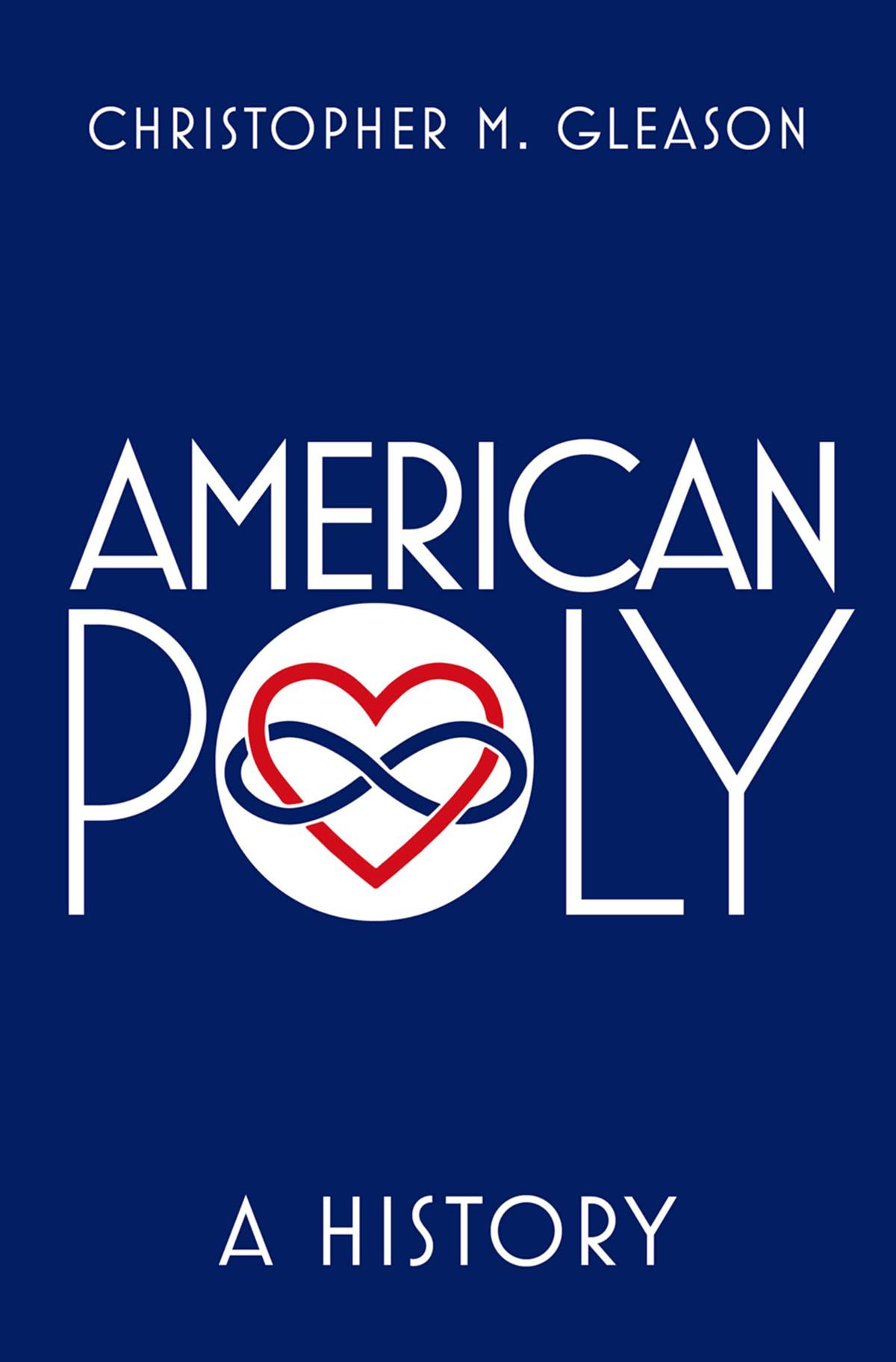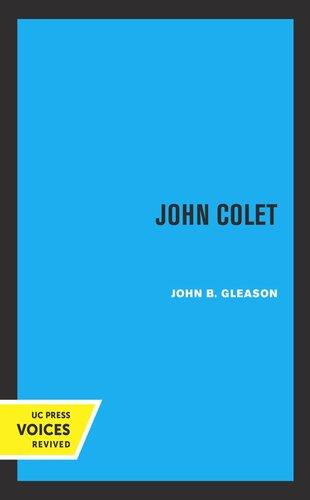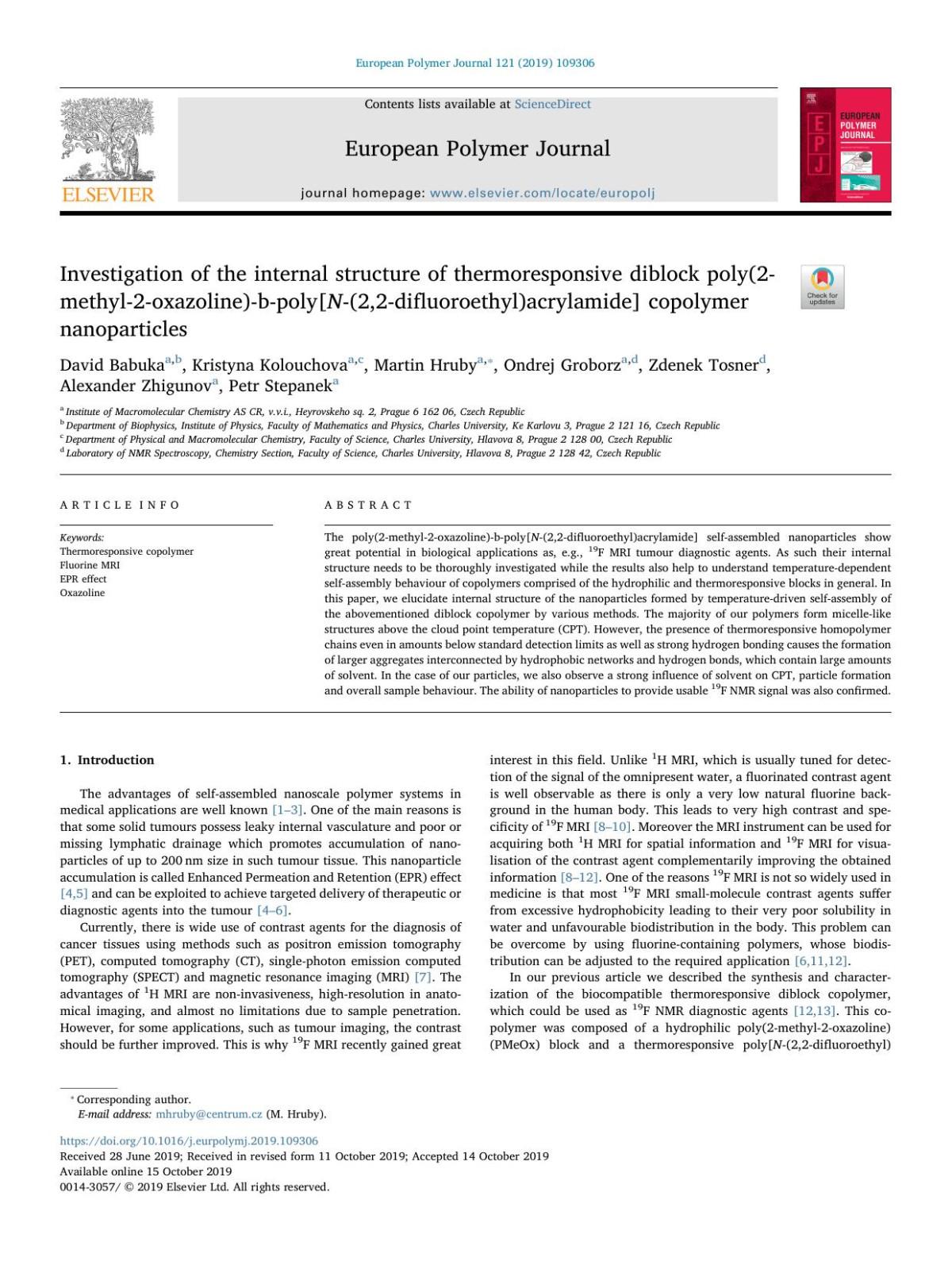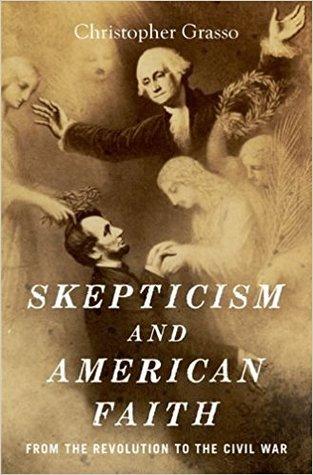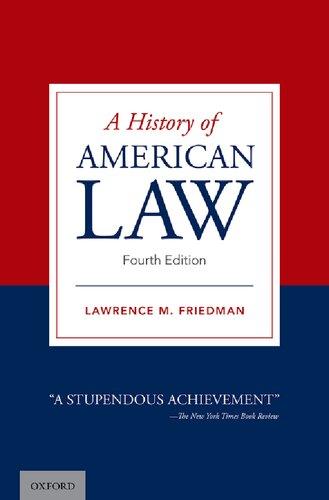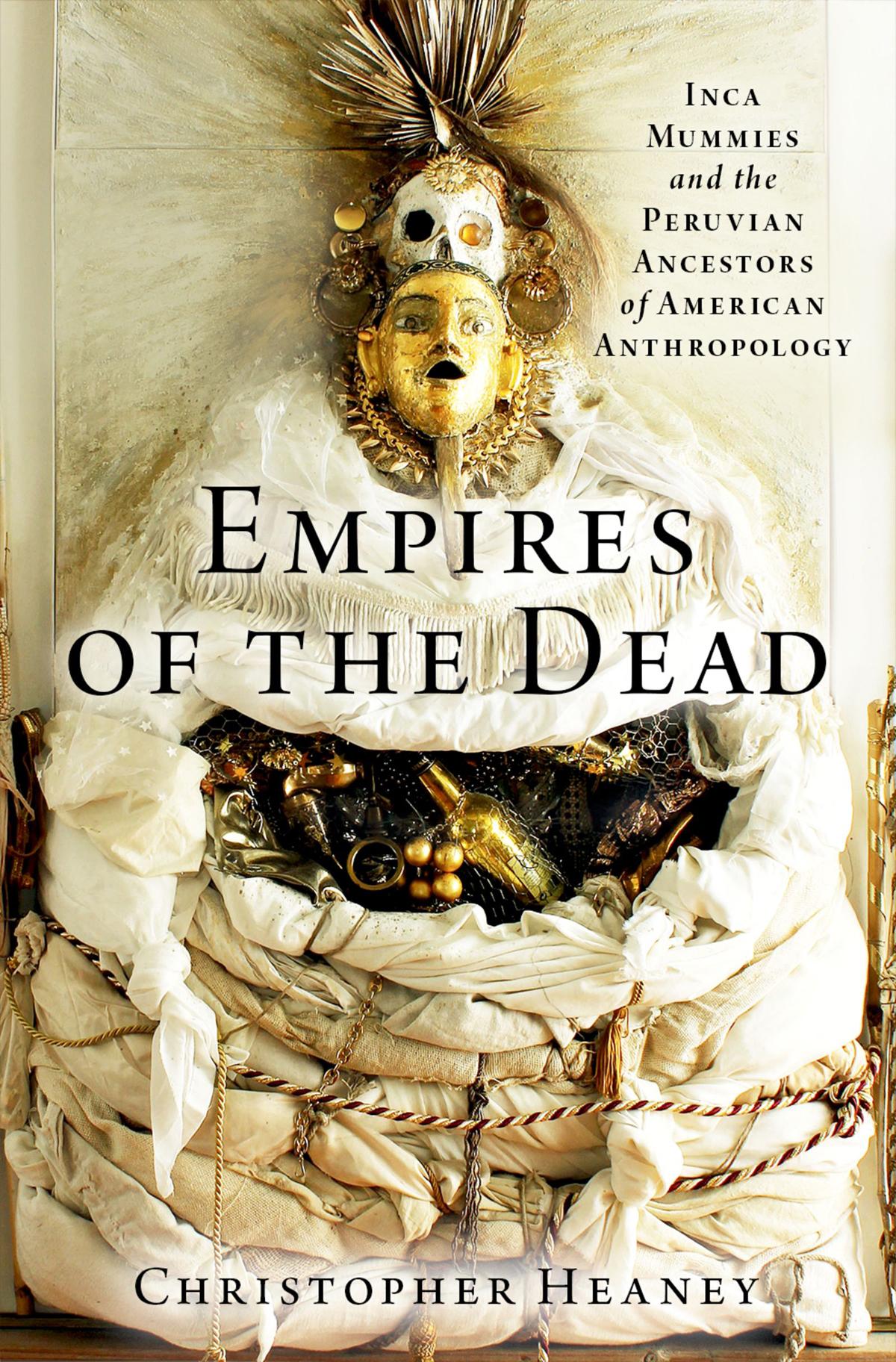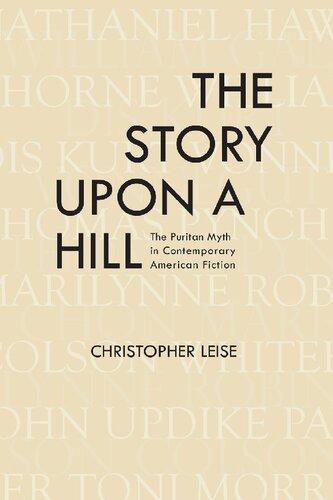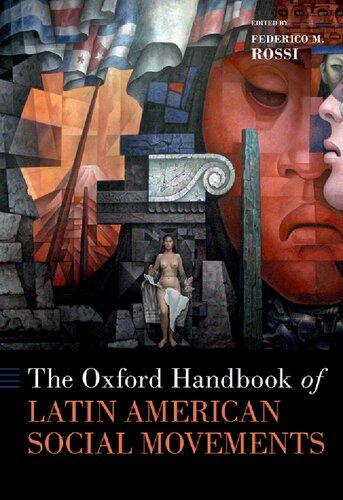AMERICAN POLY
Introduction
Piper Joy Mayfield was born in San Diego, California, in 2017. Despite a very short stint in the newborn ICU over concerns about her ability to breathe on her own, her birth was unremarkable. Yet if Piper’s physical birth was routine, the events surrounding it were not. Her three fathers, Ian Jenkins, Alan Mayfield, and Jeremy Allen Hodges, had made history as the first polyamorous “throuple,” or mutually consensual romantic relationship between three people, to have all three of their names listed as parents on their child’s birth certificate. At the time, Jenkins and Mayfield had been in a committed relationship for almost a decade and a half, with Jeremy joining them eight years in as their third. Even though the three men had long been in a committed relationship, the legal battle they fought to secure a surrogate, finance in vitro fertilization, and then obtain legal recognition as co-parents cost more than $120,000. Initially the judge who presided over their case was reluctant to bestow legal recognition on such a novel and non-traditional familial structure, arguing that alterations to the law were first needed to accommodate the validity of their union. Yet the throuple’s emotional pleas, combined with the promise of the financial and emotional security that a three-income, multi-parent household could provide, eventually persuaded the judge. Because the decision was not made in appellate court, it did not set future legal precedent for polyamorous families, a fact that aided the judge in her decision to grant their request. Although the three fathers subsequently indicated their desire to live private lives going forward, they made a few media appearances and Jenkins has penned a memoir of their journey, hoping to inspire other polyamorists to seek out legal protections for their own families.1
Despite the ongoing threat of social ostracization, other polyamorists have been less reluctant to step into the limelight. Take, for instance, Angelica, Lori, and Brian, a throuple who appeared on a 2020 episode of House Hunters, a popular reality show that follows families searching to purchase their ideal home. Despite being unable to lawfully wed in the United States, the throuple had recently joined in a commitment ceremony in Aruba, remarking that, “This has nothing to do with church and state; it’s a commitment between the three of us. We are all equals in this relationship.” Once united, they turned their attention to finding a home that included a triple sink vanity in the master bedroom. While many of the program’s viewers lauded the show for its positive portrayal of polyamorous families, critics, including conservative Princeton law professor Robert George, lamented the episode as the latest example of the erosion of American sexual ethics.2
Moral evaluations aside, the controversy sparked by the episode, much like the San Diego throuple’s legal struggle, represents polyamory’s increasing public exposure and the cultural conflict that has accompanied it. Yet while those anxious over the revision or decline of American family values have expressed sharp disdain for polyamory, other Americans have embraced its legitimacy. The past two decades have witnessed mainstream media outlets such as Time, The Atlantic, Esquire, Rolling Stone, and TED bestowing favorable attention on the lifestyle, further attesting to its growing popularity. This has led some cultural commentators to ask whether polyamory represents a new stage in an ongoing sexual revolution.3
Polyamory’s emergence in the public square has attracted academic attention as well. In 2016, the American Psychological Association (APA) established a task force on consensual nonmonogamy. According to the APA, the goal of this initiative was to generate research, education, and training that would lead to increased awareness and acceptance of consensually nonmonogamous lifestyles, including but not limited to polyamory. That same year, researchers at Indiana University, in conjunction with the Kinsey Institute, published a study claiming that as many as one in
five Americans have experimented with some form of consensual non-monogamy at some point in their lives.4
Polyamory’s mainstream novelty raises the question: What exactly is polyamory? The term, originally coined in the early 1990s, tacks the Greek prefix poly onto the Latin amor, translating to “many loves.” Providing a concise answer beyond that can be difficult, with experts disagreeing over its practice, aims, and significance. Sociologist Mark Regnerus has argued that polyamory is really about cheap sex. According to Regnerus, polyamorists have negotiated relationships that allow for low-stakes sex, void of commitment, outside of their primary relationship. Primarily concerned with “sex and dinner dates,” polyamorists, he argues, have a general disdain for marriage and typically do not share children or homes with their polyamorous lovers. This absence of commitment, Regnerus believes, leads inevitably to sexually transmitted infections, deadbeat dads, and patriarchal misogyny.5
Yet such conservative alarmism negligently overlooks polyamory’s ideals and its practice. It certainly does not describe Piper Mayfield’s three dads or the HouseHunterthrouple. A deeper look reveals that, over the past thirty years, “polyamory” has become an umbrella term used to describe a host of romantic or intimate relationships that provide an ethical framework for various forms of nonmonogamy. As sociologist Mimi Schippers writes, polyamory refers to “committed, emotionally and sometimes sexually intimate relationships involving more than two persons.” It presupposes that all parties consent and either know or are at least hypothetically aware of one another. Polyamory prizes commitment, honesty, trust, mutual consent, open communication, and equality among all sexes and sexual orientations. These common themes and commitments demarcate polyamory from other forms of non-monogamy, such as polygamy, that have historically rejected gender equality and LGBTQ+ lifestyles.6 Thus, polyamory should be understood as a subcategory of the much larger category of ethical non-monogamy. Not all ethical non-monogamy is polyamory. But polyamory is inherently ethically non-monogamous.
Though polyamory entails these ideals, it manifests in diverse ways, making further definition difficult. It means different things to different people. For some polyamorists the term denotes a type of extended family structure where multiple individuals have made lifelong commitments to one another and all live together. For others, polyamory means having one central committed relationship with the potential for a revolving set of secondary or tertiary relationships outside of that primary relationship. For still others, it might mean simultaneously enjoying several intimate relationships without ever sharing assets or living spaces with anyone else.
For some polyamorists, their relationships are deeply rooted in religion or spirituality, with the lifestyle sometimes thought of as a microcosm representing the greater interconnectedness of ultimate reality. For others, the lifestyle holds no spiritual basis at all, representing instead a freethinking mode to transcend religious or culturally constructed notions of familial structures. When Crystal Byrd Farmer, editor of the magazine and online forum Black and Poly, was recently asked to provide a succinct definition of polyamory, her answer was that it is a relationship form falling under the larger umbrella of consensual non-monogamy where people engage in consenting relationships with multiple people. Outside of this general definition, Farmer assured, there was no fixed model for polyamory. Practitioners may adapt it to fit their individual needs alongside the desires of the other individuals involved. Though many contemporary polyamorists take Farmer’s pragmatic approach and even oscillate between variant forms of polyamory, more dogmatic polyamorists often ostracize forms of the lifestyle they deem illegitimate.7
This book aims to provide a history of polyamory in the United States as an idea and as a lifestyle. This is not to say that polyamory is a purely American phenomenon. It is now practiced throughout the world. But polyamory’s central terms and concepts, including the word itself, were forged in the United States and their early proponents were products of American sexual dissent. By providing this historical context for polyamory, this book also intends to
underscore that, at its core, polyamory is far more than an attempt to jettison commitment for hedonism. More than cheap sex, it is a detailed and often costly rethinking of the social, religious, and ethical foundations of intimate relationships.8
Historically, the very notion of ethical non-monogamy was a contradiction in terms within mainstream American culture. From the colonial period, monogamous matrimony was inextricably linked to the moral and social order. American families were seen as microcosms of the larger political order, with men at its head and women and children placed under their authority. This structure tied private life intimately to the public good, solidifying in both law and culture what historian Nancy Cott has described as “a particular marriage model: lifelong, faithful monogamy, formed by the mutual consent of a man and a woman, bearing the impress of the Christian religion and the English common law in its expectations for the husband to be the family head and economic provider, his wife the dependent partner.”9
For early Americans, the consensual nature of heterosexual monogamous marriage bestowed upon the institution the same legitimacy American citizens were thought to grant their government. Yet, in practice, many Americans, particularly women, knew that the institution fell short in many respects. The most glaring of these shortcomings was the legal notion of coverture, which subsumed the citizenship of wives into that of their husbands, legally suspending their own civic identity and robbing them of their ability to accrue property or enter contracts. Coverture mirrored the biblical notion of the patriarchal family held in such high esteem by America’s moral establishment. Christianity gave credence to established law, providing religious justification when the preservation of female personal autonomy was compromised. Deviations from this normative vision of matrimony, particularly those that challenged Christian morality, monogamy, the hierarchy of the sexes, or heterosexuality, were seen as threats not just to the public order but also to divine mandate. Such deviations were met with swift censure from both the American legal and moral
establishments, or what historian Michael Bronski has aptly termed America’s “persecuting society.” Polyamory directly or indirectly challenges each of these assumptions.10
Because the most striking feature of polyamory is its rejection of monogamy, the most obvious starting point for this history would be an analysis of American traditions that have rejected monogamy. Polygamy is the most obvious example. Polygamy in America has a rich history predating European colonization. Even after the nation’s founding, it existed among indigenous communities, slave populations, and, most infamously, within Mormonism. Yet while indigenous polygamy sometimes offered its female practitioners social benefits, including property rights, access to divorce, and even political power often not enjoyed by women living within the American mainstream, polygamy has predominately entailed a commitment to male patriarchy that is explicitly disavowed by polyamorists. Because of their commitment to gender equality and queer sexual orientations, polyamorists have all but unilaterally distanced themselves from American forms of polygamy, particularly that historically practiced by Mormons. They do not adopt polygamist concepts and often disdain the practice as unethical. For this reason, attempts to link the two based on their shared rejection of monogamy are typically based on shallow analysis and cannot hold up to historical scrutiny. Though polygamy is a form of ethical non-monogamy, polyamory is a distinct branch on that family tree.11
Another way to think about polyamory’s beginnings is to frame it within the longer history of challenges to conventional marriage more closely situated within the American mainstream. From the nation’s founding, subsets of American women have resisted the coercive and unequal effects of heterosexual monogamous matrimony. On the eve of Independence, the future First Lady Abigail Adams famously implored her husband that, when constructing the nation’s new code of laws, he would “remember the ladies.” Adding her conviction that all men were inherently tyrannical, she made it known that women were determined to form their own rebellion against what she believed was an unlimited
tyranny. Pleading with him to shun laws that would perpetuate such indignity, she exhorted him to willingly trade the tyranny of the master for the tenderness of an endearing friend. Though it is certain that Abigail entertained no notions of ethical non-monogamy, she clearly understood the potentially oppressive nature of the institution of marriage as it was practiced.12
Despite Abigail’s hopes, her endeavor to stifle the need for rebellion was ineffective. Well before women gained the right to vote nationally, women much more forthright than Adams publicly challenged the male hegemony enshrined in marriage and supported by both religion and law. In 1848, the iconoclastic reformer Elizabeth Cady Stanton again drew a parallel between the nation’s Independence and the struggle between the sexes. In her Declaration of Sentiments, she railed against a host of inequalities, from property rights to access to jobs and education, decrying man’s usurpation of Jehovah’s authority in his oppression of women in both civic life and marriage.13 For the next half-century, Stanton and other women’s rights advocates, would vie vigorously for equal treatment within the bounds of matrimony as well as within the public square. Yet, in its mainstream forms, the pre-feminist women’s movement of the nineteenth century rarely went so far as to advocate for the consensual sustainment of multiple intimate partners. Pragmatically, such notions were detrimental to the more pressing goals of acquiring access to equal education, careers, and suffrage.14
A closer nineteenth-century analogy to contemporary polyamory can be found in the sex radicals from whom most feminists of the period sought to distance themselves. Though the term “free love” conjures images of Bay Area hippies during the 1960s in the minds of most Americans, the tradition has a much a longer history. The earlier free love dates to the 1820s and 1840s, when the ideas of the freethinking religious critic Robert Owen and the utopian socialist Charles Fourier began infiltrating the newly formed American middle class. Originally efforts to ride the wave of early American reform, both Owenism and Fourierism were attacks on the evils of unbridled
capitalism that took aim at the injustices of wealth inequality. Such efforts had some short-lived success, as exemplified by the establishment of utopian communal experiments such as the Owenite New Harmony in Indiana and the originally Transcendentalist Fourierite stronghold of Brook Farm in Massachusetts. Though these early experiments failed to institute major marital reform, they did serve as spaces for rethinking traditional marriage and reshaping it along more secularly progressive lines. In the 1850s, a network of sexual dissenters took up these critiques. Heirs of the Second Great Awakening, these Americans rejected the orthodoxy of their youth, instead combining nineteenth-century spiritualism with notions of individual sovereignty that rejected systemic authorities, whether civil or ecclesiastical. The implications for marriage were unavoidable. By the early 1850s, free love proponents were drawing parallels between matrimony and slavery. Pointing to the endless agony of an unhappy marriage, free lovers decried the isolation and subjugation matrimony imposed on women and claimed it promoted infidelity, marital rape, and the seeking of prostitutes by men. To alleviate such evils, they promoted intimate unions rooted in individual autonomy that ensured marriages based on mutual attraction, gender equality, and spiritual affinity.
Free lovers became advocates of more liberal divorce laws that would offer a method of reprieve to Americans trapped in marriages that did not live up to these ideals. On the matter of sustaining relationships with multiple partners, however, free lovers often differed. On the more conservative side of the spectrum, many free lovers practiced serial monogamy, prizing the ability to vacate intimate unions when they no longer benefited the parties involved. Some would have disdained the notion of maintaining multiple partners simultaneously, and many, with sexual ethics rooted in contemporaneous spiritualist sensibilities, followed in the tradition of early American health reformers that downplayed the need for regular sexual intercourse. On the more liberal side of the spectrum were those who advocated for unlimited variance in lovers. The bestknown example is Victoria Woodhull, a self-proclaimed Savior and
Prophetess who gave up her career as a fortuneteller to become the first woman stockbroker in New York City (along with her sister) before running for President of the United States. Woodhull’s brand of free love was much less restrictive, railing against any law that would interfere with her ability to change lovers at any whim, a characteristic that led to popular artistic depictions of her as Satan.15
Though there are numerous parallels between the early free love movement and contemporary polyamory, there is no traceable historical connection between the two. At its heart, nineteenthcentury free love was a countercultural movement that sought liberation from middle-class Victorian sexuality. Both it and polyamory were built on a rejection of Judeo-Christian orthodoxy and the belief that the state should refrain from regulating intimate relationships. Both share deep commitments to individual autonomy and gender equality, and both, at their zenith, were deeply spiritualist. Despite these shared characteristics, there appears no clear line of succession between these two manifestations of ethical non-monogamy. Though one of America’s most influential polyamorists later received an award from the Woodhull Freedom Foundation (est. 2003), references to her or other contemporaneous free lovers are glaringly absent from early polyamorous writings. When such references are made, they usually show up in later work and appear to be ad hoc attempts to create a historical lineage.16
Rather than creating non-existent historical connections between polyamory and its precursors based on the shared rejection of monogamy or critiques of traditional marriage more broadly, this book originates in a study of the central personalities prominent within American polyamory and uncovers the ideas that influenced their thought, setting those ideas within their larger historical context. The key agitators who produced a coherent notion of polyamory and promoted that notion effectively within American society were children of the 1960s, hippies and communalists who experimented with alternative spiritualities, drugs, and free love during their youth. But the cultural shifts that allowed for such dissent predate the counterculture of the 1960s. When set within its
proper historical context, it becomes clear that polyamory is a unique manifestation of the twentieth century.
The turn of the twentieth century was a watershed in the evolution of American sexual culture. By the late 1800s, the combination of immigration, urbanization, and industrialization was radically transforming American society, drawing together diverse groups of individuals in tighter proximity and arming them with newer technologies to spread their ideas. Growing populations of eastern and southern European immigrants combined anarchist and socialist political philosophies with pockets of homegrown progressives to produce new notions of free speech, gender equality, and sexual freedom that both intrigued and scandalized American moral sensibilities. These bohemian dissidents concentrated in America’s growing metropolises, New York’s Greenwich Village in particular, where they heralded the death of the repressive Victorian era while practicing a revitalized version of free love that celebrated sexual variety. The most infamous was Russian-born Jewish freethinker and anarchist Emma Goldman, who maintained a romantic foursome with her lover Alexander Berkman and another couple before conspiring political assassination, being arrested for distributing birth control material, and eventually being deported to Russia for encouraging draft dodging during the First World War.17
Though Bohemian sexual morality failed to liberalize American sexual mores wholesale, it did serve as a harbinger of greater change. By the 1920s, mainstream culture had coopted a watereddown version of Bohemian sexuality bereft of its political extremism and radical embrace of free love. Magazine ads and billboards commodified images of the New Woman, with her short hair, cigarettes, and economic independence. As sexual modernism trickled into the mainstream, American sexual culture began to evolve. The mass influx of rural Americans into cities radically altered family dynamics, and many young Americans found themselves in a world drastically different from that of their parents a few decades earlier. Access to automobiles, amusement parks, petting parties, and speakeasies provided new spaces for intimate interactions, both
heterosexual and homosexual. Young Americans around the nation seized on such opportunities, becoming increasingly at ease with premarital sexual contact. In the political sphere, the passage of the Nineteenth Amendment in 1920 encouraged activists led by Alice Paul to introduce the Equal Rights Amendment (ERA) to secure the new age of gender equality for which so many American women had long hoped. Simultaneously, Margaret Sanger established the American Birth Control League, forerunner to Planned Parenthood. The group decried the oppressive moralism of the Comstock Laws that forbade the transmission of sex education material, typically deemed pornographic, through the mail. The shift in youth sexual culture, the ERA, and Sanger’s war for birth control all pushed sex and family to the forefront of national dialogue, dividing progressives and conservatives in a manner that has led recent historians to argue that both the sexual revolution and the ensuing culture wars began during the Roaring Twenties.18
For many Americans enthusiastic about the liberal trajectory of American sexual mores during these years, hope seemed short-lived. The Great Depression and the New Deal’s many attempts to remedy it not only meant that Americans’ need to survive eclipsed preoccupations with sexual liberation but also that the federal government would have a more expansive role in American life. Though the passage of the Nineteenth Amendment had begun the long dismantlement of coverture, economic hardships reinvigorated the role of feminine domesticity. New Deal programs prioritized both marriage and white male employment, reinforcing the notion that a husband’s civic identity was tied to his role as provider and a wife’s to her role as mother.19
More than anything, the Cold War reshaped American notions of intimacy and domesticity. The rise of the Soviet Union as a superpower coupled with the detonation of the atomic bombs over Hiroshima and Nagasaki weighed heavily on the American family, producing a cultural paranoia that combined fears of the spread of godless communism with the psychological horror of imminent nuclear destruction. Such trepidation pushed Americans toward a
desire for stability and order. Exacerbated by the rapid suburbanization of its cities, these Cold War anxieties produced an American consensus concerning family life that further reinforced the notion that lifelong heterosexual monogamy was an integral linchpin of social order.
Though the nuclear family that emerged during the postwar years, with its isolated families made up of a husband, wife, and 2.5 children, was a deviation from the more geographically centralized family of previous decades, it functioned in mainstream America as a symbol of American unity, stability, and morality. Buttressed by law, culture, and a stable economy, the American consensus that emerged linked sexual conformity to the character and prosperity of the nation. Modesty and prudent talk were prized. Divorce, as well as procreation outside of marriage, was highly disparaged, while interracial marriage remained illegal. Homosexuality, branded a mental disorder in 1952 by the APA, not only ensured social exclusion and loss of livelihood for queer Americans, but could also mean loss of freedom as both state and federal agencies systematically rooted out homosexuals for arrest.20
Yet where there is culture there is always counterculture. Even as America’s midcentury consensus was forming, there were already signs of its collapse. In the wake of the century’s most sexually oppressive years, subsets of the American public were already pushing back against the culture of sexual coercion that permeated American society. Both the nascent homophile movement, led by the gay men of the Mattachine Society and the Daughters of Bilitis, their lesbian counterparts, made great strides in legitimizing queer lifestyles during the most dangerous years of the antigay McCarthyite witch-hunts. Simultaneously, the Beatniks of the late 1950s represented a swath of American youth who rejected the conformity and ease of Cold War suburban life for a more transient, drug-induced, and sexually experimental lifestyle, paving the way for the counterculture of the 1960s. Equally significant was the publication of the best-selling Kinsey Reports, SexualBehaviorinthe Human Male (1948) and Sexual Behavior in the Human Female
(1953), written by Indiana University zoologist Alfred Kinsey and his group of researchers. These studies belied the façade of the American consensus on sexuality with their claims that masturbation, premarital and extramarital sex, and homosexuality permeated American life to an extent unappreciated by most Americans.
Ironically, the same generation that produced the consensus culture of the mid-twentieth century also birthed the children who dismantled it. By the early 1960s, it was clear that the postwar baby boom made possible by the monotony of American domesticity would prove its undoing. Those seeking sexual liberation began looking to the organizational strategies of the Civil Rights Movement. By the end of the decade, increased access to the birth control pill, the emergence of second-wave feminism, the legalization of interracial marriage, and the first sparks of a more militant Gay Liberation Front all signaled an undeniable sexual revolution occurring in American society.
One group within this larger cultural stream were the hippies, young Americans who, like the Beats before them, rejected conformity to mainstream values in lieu of existential experience. Beginning in the 1960s, thousands of these American youths left home and migrated toward the West Coast. Following the dictate of Harvard professor and psychedelic evangelist Timothy Leary to “tune in, turn on, and drop out,” these youths established a host of countercultural communities that promoted experimentation with religion, drugs, and sex. Polyamory’s most influential figures were active within these communities, and it was there that their ideas began to take shape.21
Using polyamory as a lens through which to view sexual dissent in the second half of the twentieth century provides a unique perspective on American sexual counterculture. The polyamorist impulse that emerged during the 1960s was already more than youthful appeals to jettison prudish morality for unchecked hedonism. Dovetailing the counterculture’s critiques of the American sexual order, polyamorists took aim at the traditional Christianity on which that order was based. But they did not become more secular.
Early polyamorists were as drawn to the plethora of new religious movements that arose from within the counterculture as they were to its emphasis on sexual experimentation. Their search for a new spiritual foundation on which to rebuild a moral and social order in the absence of Judeo-Christian mores opened them up to a host of alternative spiritualities. Many of these spiritualities were eclectically fabricated from diverse sources, including eastern religious traditions, pre-Christian paganism, and even science fiction novels. This history testifies to that deeply religious, though anti-Christian, character of early polyamorous thought.22 It also uncovers how early polyamorists married these new religious notions with a right-wing political disposition typically uncharacteristic of the larger American counterculture.23
During the 1970s, polyamorists remained on the cultural periphery. As the optimism of the 1960s waned, many hippies and others sharing their ideals reluctantly reintegrated into mainstream society. Radical notions of sexual liberation, including those challenging monogamy, did seep into American culture. More privatized manifestations such as swinging parties among aging baby boomers replaced older public performances like those embodied in the infamous 1967 Summer of Love. However, polyamory’s key players held on. Rather than reintegrating into the American mainstream, they tended to remain in either formal communes or other isolated countercultural communities where their ideas continued to develop. As the Civil Rights Movement, gay liberation, and second-wave feminism continued to make gains within the mainstream, polyamorist impulses remained on the fringes within these disparate communities. Not until the 1980s would their ideas make their way into more public forums.24
The emergence of polyamory in the public square during the 1980s provides insights into divisions within queer sexual dissent. The polyamorist agitators who coalesced in the 1980s saw themselves as working within the same tradition as the many other liberation movements of the 1960s and 1970s. Initially hoping to build political alliances among gay and lesbian communities, they
were disappointed when many queer Americans shunned the promotion of polyamory as detrimental to their political aims for social acceptance. Finding that bisexuals were also shunned within gay and lesbian communities, polyamorists harnessed this shared sense of alienation to form alliances with bisexual activists.25
In addition to these alliances, polyamory is distinct in the way proponents framed their message in the face of moral detractors during the decisively conservative shift of the 1980s. For conservatives, the 1960s represented a break from the perceived unity and stability of the American commonweal. By the 1980s, this uneasiness had incited an all-out backlash among Christian conservatives who saw the sexual revolution of the 1960s and 1970s as catastrophic for America’s destiny, as well as its very soul. In subsequent decades, these cultural warriors took aim at liberal gains in censorship laws, birth control, sex education, gay liberation, and women’s rights.26
In the face of this conservative counter-revolution, polyamorists tirelessly organized, leading conferences, making public appearances, and printing a deluge of material. But they did not chide conservative reverence for family values. Rather, they internalized the conservative emphasis on stability and commitment, reframing the sustainment of multiple intimate partners not as an undoing of family values but as a necessary evolution in familial dynamics that better safeguarded the family from the alienation, isolation, and economic hardships of the post-nuclear age. Their focus on religiosity and family values, along with their consistent distrust of the state, allowed polyamorists to argue that they, not the Religious Right, were the true defenders of spirituality, family, and freedom. They naïvely believed that their new vision for the American family might become readily accepted as a moral corrective rather than an erosion of family values. Though in the end they failed to produce a cohesive social movement, their ideas, aided by the internet revolution of the 1990s, diffused into American society, ensuring that an unsuspecting link to the 1960s, reshaped
by the culture wars of the 1980s and 1990s, became increasingly popularized in twenty-first-century mainstream culture.
1 Paganisms
To deny or denigrate sexuality in humanity is to deny or denigrate Nature, and, therefore, Divinity.
Council of Themis (1971)
The sexual revolution of the 1960s and 1970s ignited a war against mainstream sexual mores. During that time, the counterculture rejected traditional monogamy in lieu of a more laissez-faire approach to experimentation and promiscuity. This project was not merely destructive. Many American youths wanted more than simply to tear down the sexual traditionalism of their parents’ generation. There were also those who wished to erect it its place a reformulated sexual ethics built on novel moral foundations. Rejecting the Judeo-Christian basis on which mid-century sexual ethics were based, they often looked to other religious traditions to supply new spiritual foundations for the sexual mores they created for themselves. For some this meant looking to Eastern religious traditions. Traditions predating Christianity in the West appealed to others. Throughout the 1960s and 1970s, thousands of young Americans experimented with these non-Christian traditions, eclectically synthesizing new syncretic religious movements that incorporated religiously based ethical systems that rejected monogamy on spiritualist grounds. Instead of embracing models of spirituality that pitted the immanent against the transcendent, these traditions often sought to harmonize all realms of human experience, interpreting the well-being of the individual in terms of being in sync with the divine. By the early 1970s, it was clear to those who were paying attention that the counterculture fostered a unique
environment where such traditions could thrive, enabling this impulse to proliferate.1 It was from within this spiritualist wing of the counterculture that one of the most colorful and influential streams of American polyamory emerged.2
Science fiction writer Robert Heinlein called religion and sex the two sacred cows of Western civilization. Heinlein was an agnostic with mystical leanings who took a libertarian approach to sexual freedom. By the 1960s, he had made it his personal mission to undermine blind devotion to those twin pillars of American culture. His most well-known effort to achieve that end was his novel StrangerinaStrangeLand.3
Strangerfollows the life of Valentine Michael Smith, a human child left behind as the last survivor of a failed colonization effort on Mars. Raised on the red planet, Smith learns telepathic and telekinetic abilities during his adolescence spent among the Martians. Upon his return to earth, Smith imparts Martian culture to the friends he meets. He initiates them into the Martian ritual of “water-sharing,” which binds individuals together as “water-brothers.” This ritual requires that, after drinking water together, the participants commit to a relationship of complete honesty and loyalty for the rest of their lives. He also introduces the Martian term “grok,” meaning to comprehend something in its fullness. Smith’s conversations with his new earthly water-brothers regarding the nature of religion and reality lead him to the statement “Thou art god,” which he takes to apply to himself as well as his friends. Smith then founds his own church, the Church of All Worlds. The church, made up of carefully selected individuals separated into clusters called “nests,” all subscribe to Smith’s pantheistic article of faith and practice a form of ritualistic free love. Factions on earth reject Smith’s unorthodox message, and at the end of the story, he is martyred.4
By the mid-1960s, Stranger was mandatory reading for anyone seriously involved in the American counterculture. Heinlein’s neologism, grok, spread throughout the collective consciousness of a generation aching to shed the cultural homogeneity of its predecessor. Soon nests and water-brotherhoods popped up across
the country as a subset of American youths looked to Valentine Michael Smith’s example. Yet few were as inspired by the Martian Smith as Oberon Zell, the founder of the neo-Pagan Church of All Worlds (CAW). During the late 1960s, Zell created an entire religion in St. Louis, Missouri, modeled on and named after Smith’s church in Stranger. Zell followed the novel’s example closely. He organized his movement into nests, adopted the rituals of water-sharing and open sexuality, and centered his new belief system around the Smith’s pantheistic dictum, “Thou art God.”5
During the mid-60s, Zell’s band of cultural misfits appeared much like other discontents looking to Heinleinian texts for inspiration. They were anti-authoritarian hippies who embraced the typical staples of 1960s counterculture, including free speech, free love, and drug use, characteristics that made them a thorn in the side of the administration of Zell’s alma mater, Westminster College, in Fulton, Missouri. Their presence there is evidence of the extent to which the counterculture, so visible on the East and West Coasts, had penetrated the interior of the country.
Zell and his church members were not ordinary hippies. Before discovering Strangers, Zell cut his teeth on the writings of Ayn Rand. Much like Heinlein, Rand used fiction to undermine the JudeoChristian foundation of American culture. Her novels, The Fountainhead (1943), Anthem (1945), and Atlas Shrugged (1957) each attacked collectivist thought, taking special aim at religion. In its place, Rand erected a libertarian ethics of selfishness that rejected spiritualist metaphysics and prized the primacy of the individual above all else. Deriding any strictures on personal autonomy, whether imposed by traditional morals or the state, Rand’s materialist philosophy offered young Americans an alternative to the Judeo-Christian moral consensus. Zell’s early infatuation with Rand’s libertarian gospel of anti-religious individualism shielded him from the leftist ideology so common among others in the American counterculture. Later in the 1960s, Zell’s increasingly mystical outlook led him to favor Heinlein over Rand. During the 1970s, Zell combined Heinleinian elements from Stranger with a swath of other
occultic themes to become a leader in the emerging neo-Pagan movement. The sexual ethics he and his lovers crafted during these years deeply influenced American polyamory for decades and residual aspects of their contributions still permeate it today.6
“Neo-Paganism” is an umbrella term that encompasses several new religious movements that sprang up during the 1960s and 1970s. Closely tied to witchcraft, these diverse traditions share several general commitments, most notably a tendency toward anarchy, pantheism/polytheism, ecological concern, and goddess worship. Neo-Paganism as a movement often includes the practice of ritual magic, and many of its adherents trace their belief systems back to the old pagan religions of pre-Christian Europe. By the end of the 1960s, Zell’s ongoing commitment to neo-Pagan religion prevented him from following the path of so many other ex-hippies who became jaded by the era’s unfulfilled utopian promises and eventually returned to the American mainstream. Instead, Zell formulated an enduring form of ethical non-monogamy that persisted long after the optimism of 1960s free love had waned among most of his contemporaries.7
Oberon was born Timothy Zell on November 30, 1942. He spent his earliest years with his mother in St. Louis while his father fought in the Second World War. Although he was baptized as a Presbyterian, his family never regularly attended church. Instead, Zell remembered his early religious education coming from the Childcraftseries of books, published by WorldBookEncyclopedia. He gravitated toward the Greek and Roman mythologies portrayed in those volumes, later claiming that it was that introduction to polytheism that inoculated him from the infection of Christian monotheism. Zell remained fascinated with Greco-Roman mythology throughout his youth and his preoccupation with it sparked his interest in mystery and magic. Soon after, Zell discovered Heinlein’s juvenile science fiction stories, which furthered his obsession with nature’s secrets. As an adult he fondly remembered mimicking the psychic exercises described in Heinlein’s stories, hoping to develop telepathic and telekinetic abilities. An eccentric youth, he did well in
